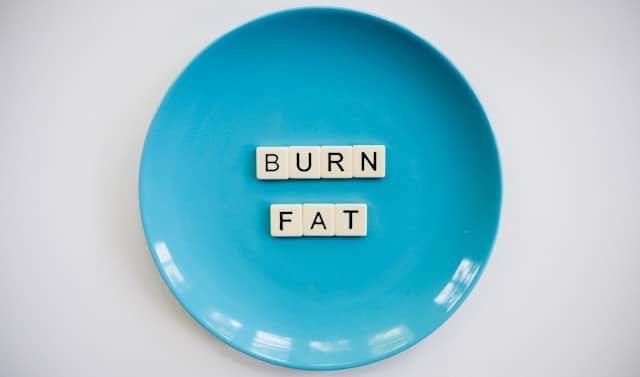Best Exercises at Home Without Equipment to Build Muscle
Benefits of Home Workouts
- Convenience: Not having to spend extra time travelling to the gym is another advantage of home workouts, leaving extra resources behind. Any schedule is good for exercising at home – in the morning or in the evening. Furthermore, it is possible to take a few minutes off whenever you need to and without restrictions and escape from crowded spaces as well as endless machines at public gym chains. In addition, all routines can be modified to suit any goal, and a combination of easily available and minimal equipment must be taken into account.
- Cost-Effective: Without access to a public gym, with all the excellent equipment that goes along with it, you can go wrong! They give you results at least as good as with those other pieces of gear — and they’re completely free, too. What’s more, because bodyweight exercises can be adapted to different levels of fitness, getting anything from fat to superfit is just a matter of fine-tuning. This will also depend on your ability to be able to control the exercises in general. Most importantly, home workouts save travel time and fares and make it easy for you to fit fitness into your daily routine.
- Privacy: Exercising at home offers a private environment. There is no need to feel self- conscious or be conscious of others. It lets you concentrate entirely on your fitness goals without interference, comparison, or comparison– creating a more comfortable and stress-free atmosphere. Moreover, regardless of how many layers are fashionable and what kind of music is popular, you enjoy unrestricted choice in clothing. With this same freedom of choice, you decide the decor for your exercise space.
- Flexibility: You can work out at home, tailoring your exercise routine to fit the levels of fitness and training goal without adhering strictly to having those classes on an irregular schedule whenever it fits best in when things are normal again–whether early morning or late at night during the afternoon or any time between. Furthermore, you can select the specific activity that you enjoy most such as yoga and strength training are popular options also this way. Indeed, this personalized approach produces much better results than a one-size-fits-all routine. It feels like taking daily photographs, but instead of “uh!” after each shot, you say, “Let’s do it!”
- Consistency: As part of your daily ritual, getting into these workout sessions at the house rapidly becomes accepted. You put those workout activities into the routine of everyday living; it creates a sense of order and discipline. To your health and fitness goals, consistency is the key to long-term success. Ensuring regular workouts helps the body adapt and change over time, allowing you to move toward your goals step by step. Establishing a workout routine encourages good habits. Such practices make it more likely that you will keep to your fitness program and produce long-lasting results.
Benefits of exercising without equipment:
- Accessible for all fitness levels: Strength training is hard for many people as workout equipment is not available to all people. People may be unable to include such exercises in their workouts, which may be challenging. Conversely, bodyweight exercises offer an appropriate alternative. This is because they do not require any equipment. They can be modified to accommodate all novices appropriately. Everyone, irrespective of level, can thus take advantage of strength training without the need for specialised equipment.
- Versatile and customisable: Such exercises also provide exceptional flexibility compared to resistance training; there are a plethora of ways you may adjust your workout to target specific objectives or address mobility issues. For a more challenging routine, you might choose a harder position, include pauses and variations, or speed up your execution. Therefore, this training option is suitable for people with different levels of fitness, from complete novices to seasoned professionals. The added difficulty and novelty of movements will also prevent you from getting bored and abandoning working out. Furthermore, you can complete the exercises with no special equipment, which makes you more likely to maintain your workout schedule regardless of external factors.
- Targets multiple muscle groups: Instead, push-ups work the chest, shoulders, triceps, and core, as well as squats which concentrate instead on quads, hamstrings, glutes and lumbar area. This will save time and provide a much more basic and “practical” sort of physical strength. When applied into real life on an everyday basis it makes lifting easier, carrying simpler to say nothing ofclimbing stairs becomes a new experience. This will also help to coordinate your muscles in the usual motion and thus improve overall sports performance.
Full Body Exercises
Workout routines that employ full-body exercises are wonderful. They allow one to take in an all-around exercise process in a shorter time frame than when escaping from this with a particular region of the body acted upon. Quite a few of these full-body exercises are very similar to single-muscle moves. A few examples are leg lifts or bench presses. They could move as a seven-part series by holding both ends of the burpee plank. Burpees with dumbbells flys for neck and shoulder care: Fold at hips, lower back straight (don’t curl around your backbone) until chest is close to ground or brick. The benefits of housing all body exercises within your regimen also include increased overall strength, improved cardiovascular health and more calories burned.
1. Push-Ups
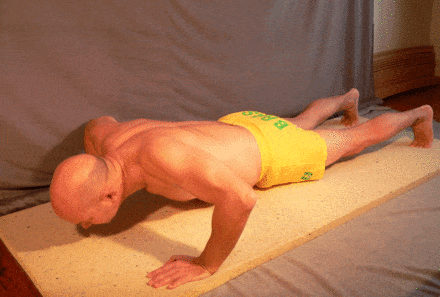
Push-ups are an essential exercise focusing on the chest, shoulders, and triceps. They also work your core and lower back for stability and strength. Start in a plank, hands wider than shoulders, lower till chest nearly touches the floor, then push back up. Regular push-up practice boosts upper body strength and endurance, a great asset to your workout routine.
Variations and Benefits
Variations:
- Standard Push-Ups: The classic form targeting the chest, shoulders, and triceps.
- Wide-Grip Push-Ups: Focuses more on the chest muscles.
- Diamond Push-Ups: Emphasizes the triceps.
- Decline Push-Ups: Elevates the feet to increase shoulder engagement.
- Incline Push-Ups: Easier on the shoulders and suitable for beginners.
- Plyometric Push-Ups: Adds an explosive element to build power and strength.
- One-Arm Push-Ups: Advanced variation that enhances core stability and strength.
Benefits:
- Builds Upper Body Strength: Targets the chest, shoulders, and triceps.
- Enhances Core Stability: Engages the abdominal and lower back muscles.
- Improves Posture: Strengthens muscles that support good posture.
- Increases Functional Strength: Mimics push movements every day.
- Versatility: This can be done anywhere, requiring no equipment.
- Boosts Cardiovascular Health: Higher intensity variations can elevate heart rate.
- Adaptable to All Fitness Levels: Numerous variations accommodate beginners and advanced athletes.
2. Burpees
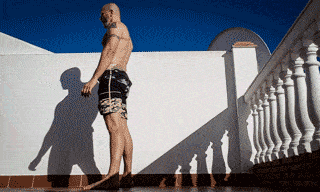
Burpees are a top-notch full-body workout. This exercise blends various moves into one smooth action. It’s a common choice in fitness plans, targeting many muscle groups for an all-around workout.
To perform a burpee correctly, follow these steps:
- Start in a standing position with your feet shoulder-width apart.
- Drop into a squat, placing your hands on the ground before you.
- Kick your feet back to land in a plank position, ensuring your body forms a straight line from head to heels.
- Perform a push-up, lowering your chest to the ground and then pushing back up to the plank position.
- Jump your feet forward to return to the squat position.
- From the squat position, explosively jump into the air, reaching your arms overhead.
For strength, endurance and cardiovascular health, burpees are fantastic. They work out many muscles at once.The legs, core, chest and arms are all involved in burpees.
This holistic approach to exercising makes burpees a highly efficient way of achieving better fitness.What sets burpees apart is that they not only make for extremely strenuous exercises when they are incorporated into a training routine, but they bring about two forms of improvement at once. They build muscle strength and endurance, and as a result, are perfect for both weight lifting workouts or aerobic sessions.
Moreover, in itself burpees require a dynamic movement which can help to enhance the balance and agility that is so important for any specialist players (Beethoven does employ these).Tuck jumps, knee tucks or using dumbbells are three modifications which can be added to burpees. These can challenge the body more and contribute to better fitness gains.As a ct of all we can see, burpees are a versatile and stimulating exercise which can be adapted for people of all kinds of fitness levels – this makes them valuable additions, indeed, to any training aerobics.
How to Perform Burpees and Their Advantages
How to Perform Burpees:
- Start in a standing position.
- Drop into a squat position with your hands on the ground.
- Kick your feet back into a plank position.
- Perform a push-up.
- Jump your feet back to the squat position.
- Explode into a jump, reaching your arms overhead.
Advantages of Burpees:
- Full-body workout.
- Improves cardiovascular endurance.
- Enhances strength and agility.
- Burns a high amount of calories.
- It can be done anywhere without equipment.
Lower Body Exercises
3. Squats

Squats are an essential lower-body workout that mainly targets quadriceps, hamstring, and glutes muscles. Squat is a compound lift that requires the knee to bend and hips to be facilitated to go into a sitting position and return to a standing position. The exercise promotes muscle strength and endurance, promotes stability flexibility, and balance. Bodyweight squats is simple, and back squatting can be completed with a barbell or dumbbell or any added weight. Squats fasten better, practical movement is optimized, and vulnerability is decreased.
Types and Benefits of Squats
Squats offer a variety of benefits depending on the type performed:
Bodyweight Squats: These exercises improve overall strength and endurance, targeting the lower body muscles such as the quadriceps, hamstrings, and glutes. They are great for beginners due to their simplicity and the ability to perform them without equipment. Additionally, bodyweight squats enhance balance and promote better mobility.
Goblet Squats: This exercise enhances core stability by engaging the abdominal muscles to maintain an upright torso. It is excellent for improving squat form, as holding a weight in front encourages proper alignment and depth, making it an ideal choice for both beginners and seasoned athletes.
Back Squats: Focus on building strength in the lower body and promoting muscle growth. Maintain proper form with a straight back and knees aligned with toes. Start with a weight you can handle comfortably and gradually increase as you build strength. Remember to engage your core throughout the movement for stability and balance.
Front Squats: Emphasize the quads and core, improving balance and coordination. This exercise requires the lifter to hold the barbell across the front of their shoulders, engaging the core for stability and focusing more on the quadriceps than back squats. Additionally, front squats can help improve posture and enhance overall athletic performance.
Bulgarian Split Squats: Single-leg strength is an effective exercise where muscle imbalances may be corrected. It entails squatting with one leg placed behind on a bench or above surface and squatting with the other. Single-leg strength improves balance, stability, and coordination of muscles. All squats help muscle tone to be bettered and flexibility improved. One’s posture will also improve, and more calories will be used up. Different types of squats can help one achieve this in different ways.
4. Lunges

Lunges are a staple lower-body exercise that greatly enhances muscle strength, balance, and flexibility. This move mainly targets the quadriceps, hamstrings, and gluteal muscles and uses the legs and core for balance and stabilization. To perform, stand tall with your feet hip-width apart and one leg forward. Slowly lower your hips until your knees are both bent to about 90°. Make sure your ankle is in line with your forward knee and not further up so your back knee is not in contact with the floor but a few inches above it, and push through the heel of your front leg to gain your starting pose. Variants may assist in intensifying the workout and reach other muscle groups, including stepping back as reverse lunges and stepping away to the sides as lateral walkways to nourish the inner and outer thighs. You might increase the intensity by adding weight, such as barbells or other weights. Integrate them into your fitness regimen to maximize athletic performance, coordination, and balancing abilities.
Upper Body Exercises
5. Tricep Dips
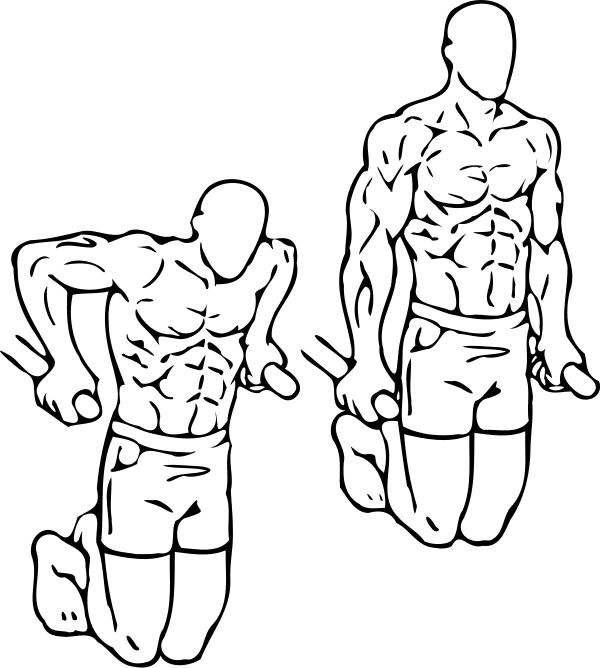
Tricep dips are a strength training exercise primarily targeting the tricep muscles at the back of your upper arms. To perform tricep dips, follow these steps:
- Setup:
Find a stable surface, like a bench or a sturdy chair. Ensure it won’t move or tip over during the exercise.
Sit on the edge of the bench with your hands placed next to your hips, fingers pointing forward.
- Positioning:
Slide your buttocks off the bench, supporting your weight with your arms. Your legs should be extended before you have your heels touching the ground your heels touch you have your heels touching the ground.
Keep your arms straight but not locked, and maintain a slight bend in your elbows.
- Execution:
Slowly lower your body by bending your elbows, keeping them pointed backwards. Lower yourself until your elbows form a 90-degree angle.
Ensure your back stays close to the bench and your shoulders remain down and away from your ears.
- Ascent:
Push through your palms to straighten your arms and raise your body back to the starting position.
Focus on using your tricep muscles to lift yourself rather than relying on momentum or other muscle groups.
- Repetitions:
Perform the desired number of repetitions, typically 10-15 for beginners, and gradually increase as you build strength.
Remember to breathe steadily throughout the exercise and maintain proper form to avoid injury. Tricep dips are effective for building arm strength and improving overall upper-body endurance.
6. Plank to Push-Up

The plank to push-ups exercise is a dynamic, versatile movement which exercises and trains multiple muscle groups simultaneously. It can hone an individual’s strength, stability and endurance. This exercise is especially effective for working on the stomach, shoulders, chest and triceps and requires the lower body to contribute as well. Here is a detailed specification explaining how to do this exercise correctly.
- Starting Position:
Begin in a standard plank position. Place your forearms on the ground with your elbows directly beneath your shoulders, forming a straight line from your head to your heels. Your body should be rigid, and your core should be tightly engaged to maintain a neutral spine.
- Transition to Push-Up:
Shift your weight onto your left forearm and extend your right arm, placing your right hand on the ground directly beneath your shoulder. Your left forearm and right hand should now support your body.
- Full Push-Up Position:
Press through your right hand and extend your left arm, placing your left hand on the ground beneath your left shoulder. You should now be in a high plank position with both arms fully extended, resembling the starting position of a push-up.
- Performing the Push-Up:
Lower your body by bending your elbows, keeping them close to your body as you descend. Your chest should come close to the ground while maintaining a straight line from your head to your heels. Push back up to return to the high plank position.
- Returning to Plank:
Reverse the movements to return to the starting plank position. First, lower your left forearm to the ground, followed by your right forearm, so you are back in the forearm plank position.
- Repetition and Variation:
Repeat the movement for the desired number of repetitions, alternating the leading arm to ensure balanced muscle development. You can add variations, such as raising one leg or incorporating a slower tempo to increase the intensity.
Benefits of Plank to Push-Up:
- Core Strength: This exercise significantly engages the core muscles, promoting a strong and stable midsection.
- Upper Body Strength: It effectively targets the shoulders, chest, and triceps, aiding in muscular endurance and strength.
- Stability and Balance: Transitioning between forearm and high plank positions enhances overall body stability and balance.
- Functional Fitness: This exercise improves fitness and overall athletic performance by mimicking everyday pushing and stabilising movements.
- Cardiovascular Endurance: The dynamic nature of the exercise can elevate heart rate, contributing to cardiovascular fitness.
Incorporating the Plank to Push-Up into your regular workout routine can yield significant benefits, improving muscular strength and endurance. Proper form is maintained throughout the exercise to prevent injury and maximise effectiveness.
Core Exercises
7. Planks

Planks are a genuine isometric core exercise. The key is to maintain a position like that of a push-up without allowing yourself to move: you have to do it for as long as you possibly can. It actually mostly works the stomach, but also reaches the glutes, shoulders, chest and backbone muscles. Therefore, it can be described as an all-inclusive course for all muscles in the central core area. To do a plank right, one must lie on their arms and fingers, with the whole body straight from head to heel. The right form is critical to avoid unnecessary lower-back strain and ensure the exercise is effective. A long term plank practice will enhance the strength of your core, make it easier to shoulder weights in other ways and improve your general stamina.
8. Bicycle Crunches

Bicycle crunches are a highly effective core exercise targeting the abdominal muscles, including the obliques. This exercise not only helps in building a solid core but also improves overall balance and coordination.
How to Perform Bicycle Crunches:
- Starting Position:
- Begin by lying flat on your back on a comfortable surface like a yoga mat.
- Place your hands gently behind your head, ensuring not to pull on your neck.
- Lift your legs off the ground, bending your knees at a 90-degree angle.
- Executing the Movement:
- Engage your core by drawing your belly button towards your spine.
- Simultaneously, bring your right elbow and left knee towards each other, extending your right leg straight out.
- Twist your torso to the left, trying to touch your right elbow to your left knee.
- Return to the starting position, but keep your feet elevated and your core engaged.
- Repeat on the Opposite Side:
- Bring your left elbow towards your right knee while extending your left leg straight out.
- Twist your torso to the right, attempting to touch your left elbow to your right knee.
- Continue Alternating Sides:
- Perform the movement in a controlled, bicycle-pedaling motion.
- Keep alternating sides, ensuring each repetition is deliberate and focused.
- Aim for 10-15 repetitions on each side, depending on your fitness level.
Benefits of Bicycle Crunches:
Core Strength:
Bicycle crunches are excellent for developing a strong and stable core, benefits crucial for overall fitness and daily activities.
Oblique Activation:
This exercise specifically targets the oblique muscles, helping define and strengthen your abdomen’s sides.
Improved Coordination:
The alternating motion of bicycle crunches enhances coordination and balance, which benefits various physical activities and sports.
Caloric Burn:
As a dynamic and engaging exercise, bicycle crunches contribute to calorie burn, aiding in weight management and fat loss.
Tips for Effective Bicycle Crunches:
Maintain Proper Form:
Ensure your movements are controlled and deliberate, avoiding jerky motions that could lead to injury.
Breathing:
Remember to breathe steadily, exhaling as you twist and inhale as you return to the starting position.
Consistency:
Incorporate bicycle crunches into your regular workout routine for optimal results.
Integrating bicycle crunches into your fitness regimen can enhance your core strength, improve overall stability, and achieve a more toned and defined midsection.
Cardio Exercises
9. High Knees
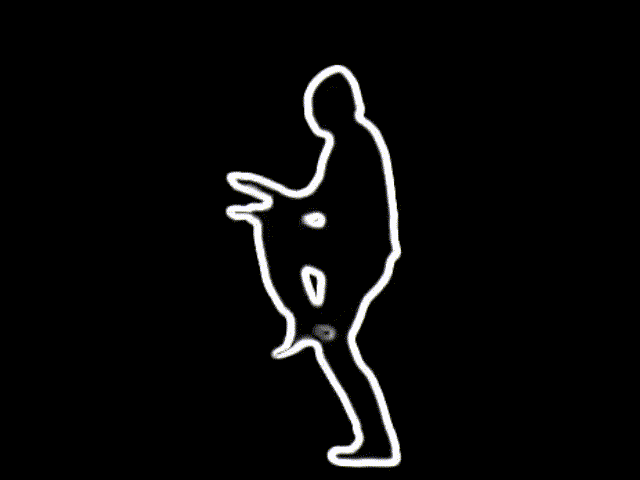
High Knee is a powerful cardiovascular workout that motivates the entire body and concentrates on increasing heart rate, improving coordination, and extending muscular endurance. Stand with feet hip-width apart to work High Knees. Lift your right knee briskly and then switch to the left knee. Continue to raise each knee rapidly, making it seem as though you are running in place. You get the most benefits when your core is activated and your back is straight or when your arms’ motions are coordinated. High Knees can help you develop your quickness, strengthen your leg muscles, and boost your cardiovascular health when incorporated into your routine. Depending on your ability, run the workout for 30-1 minute times over various sets to get the most out of it.
10. Jumping Jacks

A jumping jack is a vibrant, highly effective workout that engages numerous muscle groups. These include the arms, chest, abs, quads, and posterior chain muscles encapsulating the back, hamstrings, and glutes. This exercise is multiple workouts in one as it combines cardiovascular and strength training. It is a full-body exercise that can be done indoors. To perform a jumping jack, a person has to assume a standing position with feet together and hands by the sides; arms should be aligned parallel to the body. In one movement, jump and spread the leg apart, mirroring the action by raising the hand over the head till the palm meets each other. Bring it back down to the body and finish by jumping and bringing the feet together. This is one repetition. Jumping jacks enhance cardiovascular endurance, and major muscle groups such as the calves, glutes, and hip flexors of the lower body are sought; shoulders flexors are enhanced by upper body workout. They also help in the coordination and improvement of the full range of motion of the joints. A 10-minute jumping jack with 20 reps per set is enough to warm up the body. This is an excellent warming up for a gruelling workout, utilizing various muscles simultaneously. They are suitable for all age groups and can be done almost anywhere. For example, if the entire body was warmed up by jumping jacks, one would be readier afterwards. Warming up improves blood circulation to the body’s muscles and aids in muscle stimulation and blood supply.local data.
Q&A Section
Q: What are the benefits of bicycle crunches?
A: Bicycle crunches help build a strong and stable core. They specifically target the oblique muscles, which aid in defining and strengthening the sides of your abdomen. They also improve balance and coordination, contribute to calorie burn, and assist in weight management and fat loss.
Q: How do you perform bicycle crunches correctly?
A: Start by lying flat on your back on a comfortable surface. Place your hands behind your head, but don’t pull on your neck or use them to push and sit up; lift up instead with just the muscle power in that area of your body. Lift your legs, bend your knees 90 degrees at the same time, and bring them in from an open position where they are about shoulder-width apart, making sure not to bend too far down or come to a complete sitting position. Engage your core muscles as you bring your right elbow and left knee toward each other, stretch your right leg so it’s completely straight out to the side of theextended left is perpendicular to the ground, then twist your torso to face upwards yet also somewhat sideways from where you started. Return to the starting position. Feet should be raised and core muscles engaged. On the opposite side, repeat in a controlled, alternating motion.
Q: How many repetitions of bicycle crunches should you aim for?
A: Aim for 10-15 repetitions on each side, depending on your fitness level. Ensure each repetition is deliberate and focused to maximise effectiveness.
Q: What are high knees, and how do you perform them?
A: High Knees is a cardiovascular exercise that involves standing with your feet hip-width apart and driving your right knee towards your chest, then quickly switching to lift your left knee. Continue alternating rapidly, engaging your core and maintaining upright posture. This exercise helps improve agility, strengthen leg muscles, and increase cardiovascular fitness.
Q: How long should you perform high knees for optimal results?
A: To achieve optimal cardiovascular benefits, aim to perform high knees for 30 seconds to 1 minute in multiple sets, depending on your fitness level.
Q: What are the benefits of jumping jacks?
A: Jumping jacks enhance cardiovascular endurance by increasing heart rate and promoting circulation. They also strengthen major muscle groups like calves, glutes, hip flexors, and shoulders, improve coordination and flexibility, and can be an effective warm-up or part of a high-intensity workout routine.
Q: How do you perform a jumping jack?
A: Start by standing straight with your feet together and arms at your sides. Jump up, spreading your legs to shoulder-width while raising your arms above your head. Reverse the motion by bringing your feet back together and lowering your arms to your sides, then land softly in the starting position. Repeat this fluid motion for the desired number of repetitions.
Q: Why should you incorporate jumping jacks into your workout routine?
A: Jumping jacks are versatile and require no special equipment, making them accessible for any fitness regimen. They can serve as a warm-up to prepare the body for more strenuous activities or be included in high-intensity intervals to maximise calorie burn and boost metabolic rate.
Q: What are the benefits of burpees?
A: Burpees are a full-body exercise that combines strength training and cardiovascular conditioning. They improve cardiovascular endurance, enhance muscle strength in the legs, core, and upper body, and boost agility and coordination. Burpees also increase metabolic rate, effectively burning calories and aiding weight loss.
Q: How do you perform a burpee correctly?
A: Start with your feet apart and stand in some sort of stance. Place your hands on the ground in a push-up position, then lower yourself two fingers off the floor. Jump both of your feet to place them into a plank position. Keep your body as perfectly still as you can! Then, with your fingers on the ground, jump your feet back so they are between your hands. Explosively leap vertically, arms stretched overhead at full reach. You’ll be riding soft this time but moving on with the next repetition right away as you land.
Q: How many burpees should you aim for in a workout?
A: The number of burpees you should does not have to be fixed. Are you beginners doing 8-10 each time, while more advanced may be able to perform 15-20? However, they can also be meshed into a HIIT routine where you try to complete as much of a specific number within the given period as at 30s and women in 60 seconds.
Q: What are mountain climbers, and what are their benefits?
A: Mountain climbers are a full-body workout that engages multiple muscle groups simultaneously, including the core, shoulders, arms, and legs. They boost cardiovascular fitness, improve core stability, and enhance agility and coordination. Additionally, mountain climbers help burn calories and can be integral to high-intensity workouts.
Q: How do you perform mountain climbers correctly?
A: Start in a plank position with your hands directly under your shoulders and your body forming a straight line from head to heels. Bring one knee towards your chest, then quickly switch legs, bringing the other towards your chest while extending the first leg back. Continue alternating legs swiftly in a running motion while maintaining a stable core and keeping your hips level.
Q: How long should you perform mountain climbers in a workout?
A: Aim to perform mountain climbers in multiple sets for 30 seconds to 1 minute, depending on your fitness level. For interval training, you can include mountain climbers in circuits, performing them intensely for short bursts with rest periods in between.
Conclusion
Bodyweight exercises, such as bicycle crunches, high knees, jumping jacks, burpees and mountain climbers into the daily routine will bring different good results. These exercises will help improve your cardiovascular fitness, maintain a strong skeleton muscle structure, and increase agility and coordination so that you feel more comfortable during sports or art classes everywhere in school where proper balance is taught, which results only from an individual’s own physical capabilities; they can also help combat obesity indirectly through regular aerobic activity like cycling for half-day trips followed by walking down hillsides while still talking back to one’s partner on the phone. By doing these exercises correctly and at the appropriate levels for your fitness level, you can achieve ideal results with each set of movements (But remember – even when a professional teaches them, don’t expect any guarantees). Always listen to your body and consult with a healthcare professional before beginning any new exercise routine. You must keep challenging yourself, yet always prioritize safety and good form for the best possible effectiveness. So, the next time you work out, why not incorporate some of these bodyweight exercises? Always try to make progress.





